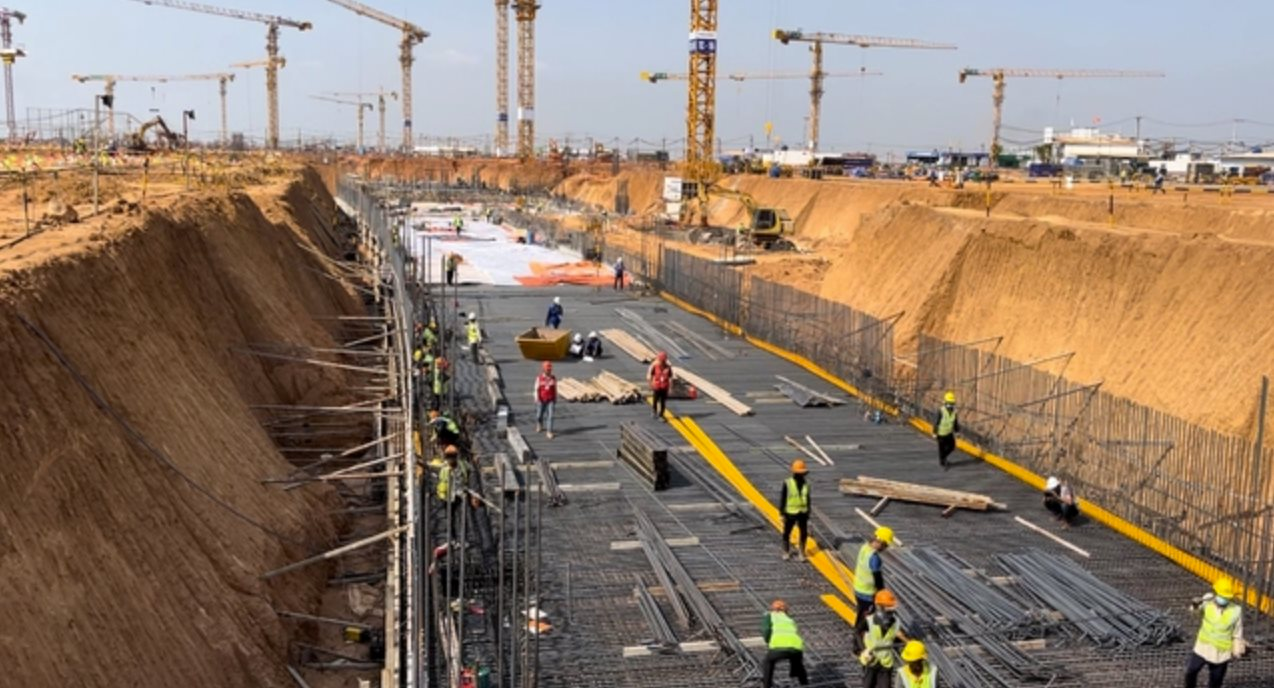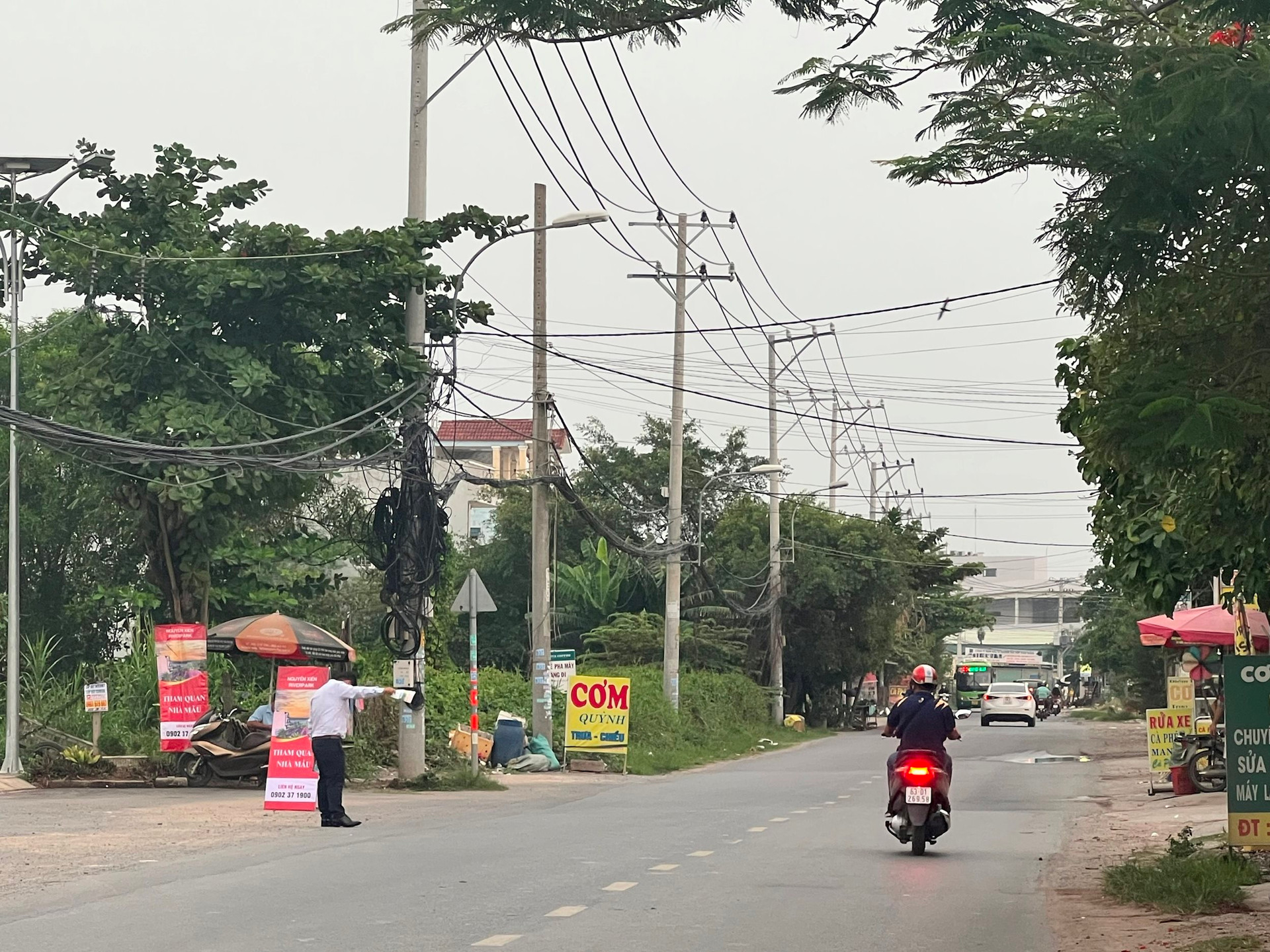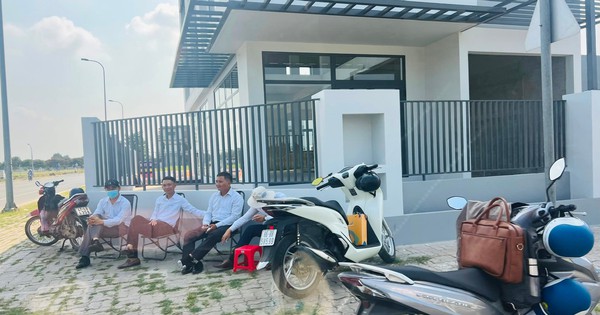Investment Wave Anticipates the Progress of Long Thanh Airport

Image: Long Thanh Airport construction progress is providing new momentum for the local real estate market.
Investors are starting to anticipate the progress of Long Thanh Airport, which is set to be completed earlier than expected. The Vietnam Airport Corporation (ACV) and its consortium of contractors recently announced a competition to complete the construction and technical operations of the runway before April 30, 2025.
The Long Thanh Airport runway project, which is part of the phase 1 development, has a length of 4,000 meters and a width of 45 meters. Construction for this phase began in August 2023 and is currently on track. The earthworks and sand foundations are almost complete, with over 70% progress made on the crushed stone base. ACV stated that their team of workers and engineers are working diligently to ensure the runway is completed before April 30, 2025.
The completion of phase 1 of the Long Thanh Airport project is of great national importance and will contribute significantly to the economic and social development of Vietnam. Once all phases are completed, the airport’s capacity is expected to reach 100 million passengers and 5 million tons of cargo per year. The total investment for the project is approximately 336.630 trillion Vietnamese dong (about 16 billion USD). Phase 1, which includes the runway, terminal, and other supporting facilities with a capacity of 25 million passengers per year, was originally scheduled to be completed by 2026. However, the target completion date has now been brought forward to 2025.
When phase 1 begins operations in 2026, Long Thanh Airport will require nearly 14,000 skilled and unskilled workers. This information was shared by Vo Tan Duc, Chairman of the People’s Committee of Dong Nai Province, at a recent conference on human resources training for the airport’s operations.
According to Duc, out of the total workforce needed, over 5,000 will require higher education qualifications, while 2,000 workers will be unskilled. The remaining workforce will consist of personnel in various fields such as management, technical operations, and direct service provision.
ACV believes that with Long Thanh Airport in operation, most flights longer than 1,000 kilometers will be directed to this airport. Therefore, training programs should focus on maintenance, care, and aircraft repair. Additionally, high-quality training facilities should also consider fields such as information technology, data centers, biometrics, automation for passenger and baggage handling, and electrical systems.
Business Today’s brand has observed a recent surge in real estate investment in Dong Nai province and surrounding areas, in response to the upcoming completion of Long Thanh Airport. Real estate transactions, including land and apartments, have started to pick up. Investors from the local area and neighboring regions such as Ho Chi Minh City, Binh Duong, and Ba Ria – Vung Tau are also paying attention to projects in the airport vicinity. They recognize the potential increase in demand for housing from the airport’s workforce from 2025-2026. Consequently, real estate projects near the airport are now considered advantageous investments. For instance, the FIATO City project by Thang Long Real Group, which is located just a 10-minute drive from Long Thanh Airport, has been attracting significant interest from the market. Offering a range of 1-2-3 bedroom apartments and commercial units, the project aims to meet the accommodation needs of both tourists and the airport’s future workforce. This presents an excellent potential investment opportunity with long-term passive income for investors.
New “Motivation” from Transportation Infrastructure Awaits Investors

Image: The real estate market in Nhon Trach, Dong Nai province, has shown signs of revival.
Apart from the progressing Long Thanh Airport project, Dong Nai province is also witnessing the development of several transportation infrastructure projects expected to be completed between 2024 and 2026. These projects are creating a positive atmosphere for the local real estate market, attracting investor interest.
Investors are eagerly awaiting the “new opportunities” brought by the urban planning and infrastructure in this area. With numerous transportation infrastructure projects in progress, connecting Dong Nai’s regions such as Long Thanh and Nhon Trach, the province is well-positioned for development.
The draft Master Plan for the overall development of Nhon Trach New Urban Area until 2045 identifies the transportation system as a driving force for the region’s growth. As part of this plan, the Tan Van – Nhon Trach section of the Nhon Trach Bridge project, which is part of the Belt Road 3 – Ho Chi Minh City, officially commenced construction in September 2022. It is scheduled to be completed and operational by 2025. This bridge will directly connect Nhon Trach district to Ho Chi Minh City.
According to Tran Quang Lam, Director of the Ho Chi Minh City Department of Transport, three additional road bridges will be invested in and built to directly connect Nhon Trach district with Ho Chi Minh City, as agreed upon by the two localities. Among these bridges, Cat Lai Bridge and Phu My 2 Bridge, with expected completion dates after 2030, will significantly improve transportation links.
To seize the development opportunities resulting from transportation infrastructure projects in the region, local authorities have implemented various transportation infrastructure projects connecting with the regional road networks. At the beginning of 2024, Nhon Trach district simultaneously initiated three transport projects: Phase 1 of Road 25C (Section 2), Ton Duc Thang Street (Road 25B), and Le Hong Phong Street extension. When completed, these projects will connect important routes in the region, such as Belt Road 3 – Ho Chi Minh City, Phuoc An Port Road, and the future Long Thanh International Airport access road.
The prospects of urban planning, transportation infrastructure, and the upcoming airport are generating positive momentum for the economic and social development of southern Vietnam, with Dong Nai province being a beneficiary. The real estate market is showing promising signs, restoring investor confidence after a prolonged period of stagnation.

